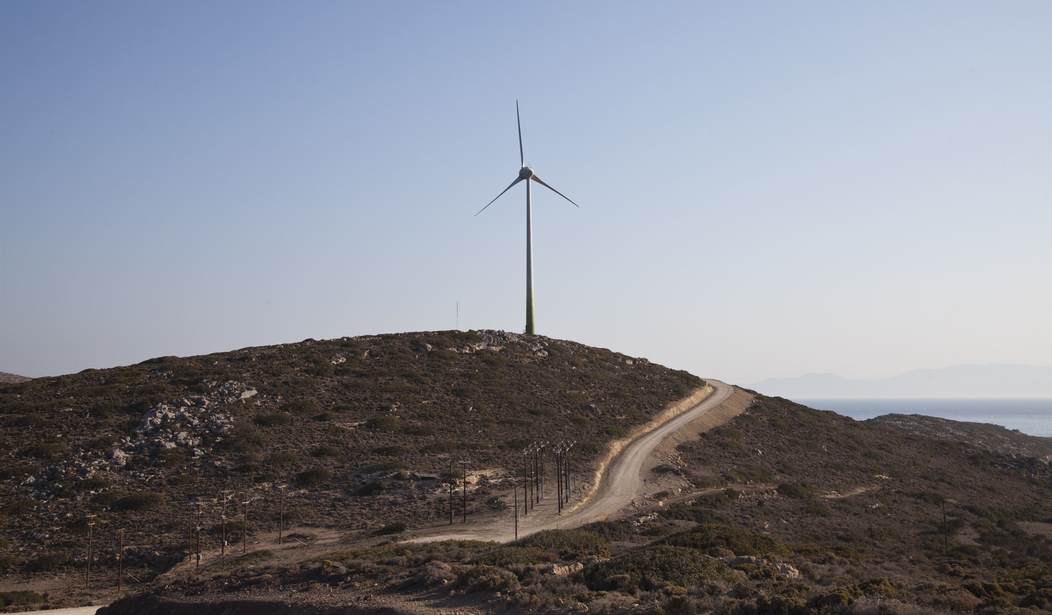There was a new round of unpleasant news for consumers in the United Kingdom this month and for once it didn’t have anything to do with COVID. Residents receiving their energy bills were shocked to see a steep increase in the price of electricity. We’re not talking a small percentage, either. Costs were double what they had been in previous months and more than four times higher than during the same period in 2020. But how could that be? The country has been investing heavily in renewable energy to meet its obligations under the climate deal and many new wind-power stations had come online, allowing them to idle many fossil fuel plants. Then the disappointing news arrived. Energy was at a premium because their renewable sources were slumping significantly. So what went wrong? It’s fairly simple. The winds on the North Sea (where most of the wind plants are) had simply stopped blowing. (Wall Street Journal, subscription required)
Natural gas and electricity markets were already surging in Europe when a fresh catalyst emerged: The wind in the stormy North Sea stopped blowing.
The sudden slowdown in wind-driven electricity production off the coast of the U.K. in recent weeks whipsawed through regional energy markets. Gas and coal-fired electricity plants were called in to make up the shortfall from wind.
Natural-gas prices, already boosted by the pandemic recovery and a lack of fuel in storage caverns and tanks, hit all-time highs. Thermal coal, long shunned for its carbon emissions, has emerged from a long price slump as utilities are forced to turn on backup power sources.
The same thing was happening in France and Germany, though not to the same degree. There was no immediate meteorological explanation for the phenomenon aside from the fact that sometimes the wind simply doesn’t blow. When that happens, the turbines stop spinning and they don’t produce any electricity.
All of this was happening at the same time that natural gas supplies were strained and prices were rising for that commodity also. The Europeans were struggling to bring their older power plants back online and suddenly finding that the cost of operating gas plants had shot up as well. Some of them even restarted their coal plants, one of the only energy resources that remain relatively cheap and plentiful. But of course, the environmentalists scream if you burn coal.
The more alarming part of the story to European energy analysts is the fact that this is traditionally one of the seasons where energy demand is lowest. In the winter, demand shoots well up above the current levels. and if they don’t figure this puzzle out, the grid may be unable to meet demand in December and January.
“It took a lot of people by surprise,” said Stefan Konstantinov, senior energy economist at data firm ICIS, of the leap in power prices. “If this were to happen in winter when we’ve got significantly higher demand, then that presents a real issue for system stability.”
The pricing issue is being compounded by another factor that amounts to a self-inflicted wound. These governments all agreed to participate in a carbon credit scheme like the one America is stuck with under the Renewable Fuel Standard. If you want to burn either natural gas or coal, you have to buy a carbon credit to offset your “carbon footprint.” The price of those carbon credits is now through the roof also, and those costs are passed on to the consumer.
The winds on the North Sea are already picking back up and for all we know they may stay within typical parameters for most of the winter. Then again, they might just shut down again next week. The wind is funny that way. Perhaps we should also point out to our European friends that sometimes it gets very cloudy for extended periods during the winter and solar energy doesn’t work as well either. But natural gas will burn under virtually any ambient conditions, provided you have a steady supply and a way to spark it. Just something to think about, folks.








Join the conversation as a VIP Member